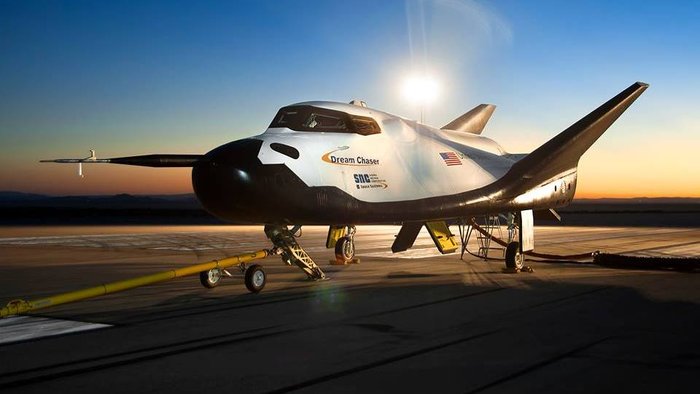Mysterious Martian "Cauliflower" May Be the Latest Hint of Alien Life | Science | Smithsonian
Unusual silica formations spotted by a NASA rover look a lot like structures formed by microbes around geysers on Earth
The hunt for signs of
life on Mars has been on for decades, and so far scientists have found only barren dirt and rocks. Now a pair of astronomers thinks that strangely shaped minerals inside a Martian crater could be the clue everyone has been waiting for.
In 2008, scientists announced that
NASA’s Spirit rover had discovered deposits of a mineral called opaline silica inside Mars's Gusev crater. That on its own is not as noteworthy as the silica’s shape: Its outer layers are covered in tiny nodules that look like heads of cauliflower sprouting from the red dirt.
No one knows for sure how those shapes—affectionately called “micro-digitate silica protrusions”—formed. But based on recent discoveries in a Chilean desert,
Steven Ruff and
Jack Farmer, both of Arizona State University in Tempe, think the silica might have been sculpted by microbes. At a meeting of the American Geophysical Union in December,
they made the case that these weird minerals might be our best targets for identifying evidence of past life on Mars.
If the logic holds, the silica cauliflower could go down in history as arguably the biggest discovery ever in astronomy. But biology is hard to prove, especially from millions of miles away, and Ruff and Farmer aren’t claiming victory yet. All they’re saying is that maybe these enigmatic growths are mineral greetings from ancient aliens, and someone should investigate.
Spirit found the silica protrusions near the “Home Plate” region of Gusev crater, where geologists think hot springs or geysers once scorched the red planet's surface. To understand what that long-dormant landscape used to be like, we have to look closer to home: hydrothermal regions of modern Earth that resemble Mars in its ancient past.
To that end, Ruff has twice in the past year trekked to Chile’s
Atacama Desert, a high plateau west of the Andes cited as the driest non-polar place on Earth. Scientists often compare this desert to Mars, and not just poetically. It’s actually
like Mars. The soil is similar, as is the extreme desert climate.
In this part of the Atacama, it rains less than 100 millimeters per year, and temperatures swing from -13°F to 113°F. With an average elevation of 13,000 feet above sea level, lots of ultraviolet radiation makes it through the thin atmosphere to the ground, akin to the
punishing radiation that reaches the surface of Mars.
Just as we interpret others’ behavior and emotions by peering into our own psychology, scientists look around our planet to help them interpret Mars, find its most habitable spots and look for signs of life. While the Atacama does have breathable oxygen and evolutionarily clever foxes (which Mars does not), its environment mimics Mars’s pretty well and makes a good standin for what the red planet may have been like when it was warmer and wetter.
So when geologists see something in the Atacama or another Mars analog that matches a feature on the red planet, they reasonably conclude that the two could have formed the same way. It’s not a perfect method, but it’s the best we’ve got.
“I don't think there is any way around using modern Earth analogs to test where Martian microbes may be found,” says
Kurt Konhauser of the University of Alberta, who is the editor-in-chief of the journal
Geobiology.
To understand Home Plate, it makes sense that Ruff turned to El Tatio, a region in the Atacama that is home to more than 80 geysers. While most other earthly animals wouldn’t last long here, many microbes do just fine, and fossil evidence suggests they also thrived in the distant past. By inference, Mars’s Home Plate might have once made a nice microbial home.
But the comparison goes further: When Ruff peered closely at El Tatio’s silica formations, he saw shapes remarkably similar to those that Spirit had seen on Mars. Fraternal cauliflower twins also exist in
Yellowstone National Park in Wyoming and the
Taupo Volcanic Zone in New Zealand. In both of those places, the silica bears the fossilized fingerprints of microbial life.
Since microbes sculpted the silica features in Wyoming and New Zealand, it's possible they also helped make the formations at El Tatio. And if microbes were involved with the cauliflower at El Tatio, maybe they made it grow on Mars, too.
But making a logical leap from one region on Earth to another—from New Zealand to Chile, for example—isn’t trivial or always correct. And it’s even more tenuous to then hop to a whole other planet where, so far, scientists have seen
no signs of life. After all, history doesn’t favor life-friendly interpretations of data from Mars.
The
Viking 1 lander, which set foot on the red planet in 1976, performed the first life-seeking experiments there. Three of them came up empty. One, called the Labeled Release experiment, found that something in the soil absorbed the nutrient solution that scientists fed it and then released an excretory plume of carbon dioxide, as if it were metabolizing the nutrients. But the team couldn’t replicate those results, and after much excitement, the researchers had to declare the experiment inconclusive.
Twenty years later, a Mars meteorite
found in Antarctica in 1984 caused a similar kerfuffle. NASA scientist David McKay published a paper in 1996 suggesting that the space rock might hold the fossils of once-living things, creating a media uproar. But other scientists soon demonstrated that the “bacteria-shaped objects” and biology-friendly molecules could have formed abiotically, or without the help of life.
Similarly, the carbon dioxide that Viking detected could have been a geochemical, not a biological, reaction. According to Konhauser, most potential biosignatures could also come about non-biologically. Scientists would have to rule out all those non-living possibilities before they could say for sure that we’re not alone.
That lesson definitely applies to the Martian cauliflower.
“Having worked on modern hot springs, I have seen all forms of structures that look biological but are not,” Konhauser says. Silica can come from non-biological processes and water, geography, wind or other environmental factors can then shape it into complex structures. “Because it looks biological doesn’t mean it is,” he says.
For the moment, Ruff and Farmer are calling attention to the Martian cauliflower because they believe it's worth further study. For instance, research teams can take hard looks at the various processes that could have spawned the formations on Mars and help to rule out non-biological alternatives.
“Only when something that we have identified as a potential biosignature is proven to have been produced only by life, and not by any abiotic means, can we make the claim that definitive evidence for life has been found,” says
Sherry Cady of the Pacific Northwest National Laboratory in Richland, who is a member of the NASA Astrobiology Institute.
She agrees that the silica growths at Home Plate look like those near hot springs on Earth. But she would like to examine the evidence up close—and not just in portraits. “I would certainly like to see some of those samples brought back,” she says.
While Spirit stopped its scientific roving in 2010,
NASA’s Mars 2020 rover, due to launch in a few years, is supposed to collect samples for eventual return to Earth. And the most recent meeting to narrow down landing-site choices for the rover kept Gusev crater on
the list of candidates. Maybe the rover should pick some of that cauliflower and potentially turn Home Plate into a home run.
While they wait for additional data from Mars, Ruff and Farmer will do more digging on Earth. They plan to investigate El Tatio to see if its silica does, in fact, show the handiwork of living beings. If they find positive results, they will have made their chain of logic one loop smaller, perhaps bringing us closer to finding out whether any single-celled cousins once squirmed around on the red planet.

















 .
.